My aim:
Use filters (cropping, Black and white, Edge detection) on a MP4 video from the SD card using render script.
Attempted Solutions
-Use MediaCodec to output to a surface directly.
The rendered colour were correct but I could not find a way to process each frame at a time to apply filters using renderscript.
-Copy the decoded buffer from render script and convert to RGB using ScriptIntrinsicYuvToRGB
I can not using ScriptIntrinsicYuvToRGB because it assumes the incoming YUV data is formatted in a different way from the incoming data. (How do I correctly convert YUV colours to RGB in Android?)
-Copy the decoded buffer from render script and convert to RGB using custom code
My current solution converts the YUV to RGB using code very similar to https://stackoverflow.com/a/12702836/601147 (Thanks @Derzu)
/**
* Converts YUV420 NV21 to RGB8888
*
* @param data byte array on YUV420 NV21 format.
* @param width pixels width
* @param height pixels height
* @return a RGB8888 pixels int array. Where each int is a pixels ARGB.
*/
public int[] convertYUV420_NV21toRGB8888(byte [] data, int width, int height) {
int size = width*height;
int offset = size;
int[] pixels = new int[size];
int u, v, y1, y2, y3, y4;
// i percorre os Y and the final pixels
// k percorre os pixles U e V
for(int i=0, k=0; i < size; i+=2, k+=2) {
y1 = data[i]&0xff;
y2 = data[i+1]&0xff;
y3 = data[width+i ]&0xff;
y4 = data[width+i+1]&0xff;
u = data[offset+k ]&0xff;
v = data[offset+k+1]&0xff;
u = u-128;
v = v-128;
// pixels[i] = convertYUVtoRGB(y1, v,u);
// pixels[i+1] = convertYUVtoRGB(y2, v,u);
// pixels[width+i ] = convertYUVtoRGB(y3, v,u);
// pixels[width+i+1] = convertYUVtoRGB(y4, v,u);
pixels[i] = convertYUVtoRGB(y1, u, v);
pixels[i+1] = convertYUVtoRGB(y2, u, v);
pixels[width+i ] = convertYUVtoRGB(y3, u, v);
pixels[width+i+1] = convertYUVtoRGB(y4, u, v);
if (i!=0 && (i+2)%width==0)
i+=width;
}
return pixels;
}
private int convertYUVtoRGB(int y, int u, int v) {
int r,g,b;
r = y + (int)1.402f*v;
g = y - (int)(0.344f*u +0.714f*v);
b = y + (int)1.772f*u;
r = r>255? 255 : r<0 ? 0 : r;
g = g>255? 255 : g<0 ? 0 : g;
b = b>255? 255 : b<0 ? 0 : b;
return 0xff000000 | (b<<16) | (g<<8) | r;
}
The only difference I made was to flip the UV values from
pixels[i] = convertYUVtoRGB(y1, v,u);
to
pixels[i] = convertYUVtoRGB(y1, u, v);
Because the latter one works better.
My problem
The colours look ok-ish on my Huddle 2, but they are totally wrong on the Genymotion JellyBean emulator.
Huddle2
Genymotion 
Please can you offer me help and suggestions?
Thanks you very much